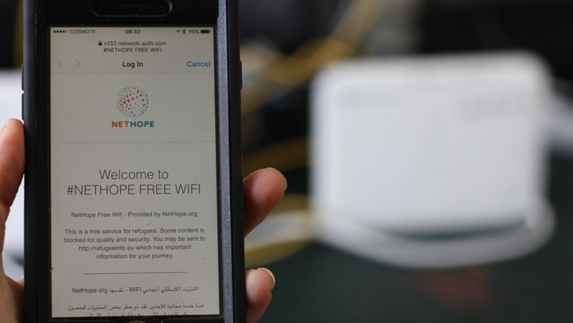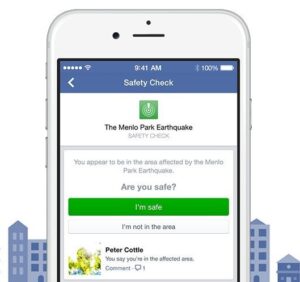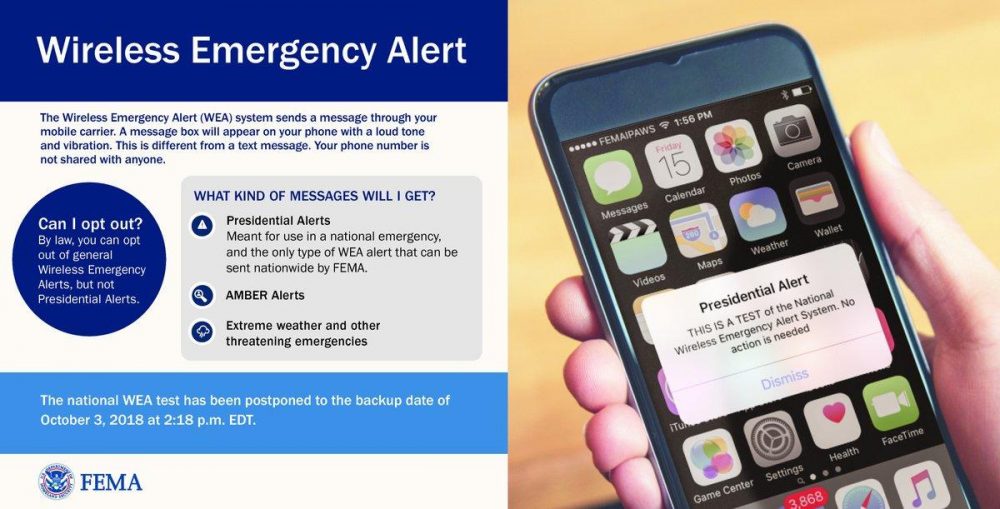
Technology
With an estimated 5 billion mobile phone users worldwide, mobile communication is proving to be the most effective and efficient means of reaching and informing the public when disaster strikes.
Overview
Internet and mobile technology have changed the way we live. Technology is where we check for news, directions and weather, and it’s how we stay in touch with loved ones.
With an estimated 5 billion mobile phone users worldwide, mobile communication is proving to be the most effective and efficient means of reaching and informing the public when disaster strikes. In the United States, the president can even send directives straight to users’ phones.
Other advances, including early warning systems for tsunamis and severe weather, are also making people safer. And non-governmental organizations (NGOs) around the world are using the Internet to raise money to prevent disasters and provide relief after they have struck. These campaigns range from individual GoFundMe pages to companies like Google and Facebook that can solicit donations from their users when disaster strikes. Both companies turned to the Center for Disaster Philanthropy to administer donations, ensuring funds were directed to local organizations in the wake of Hurricane Harvey. Just after the Boston Marathon bombings, people turned to their smartphones to let family and friends know they were okay, using apps like Life360. The Life360 cellphone app, lets users see family members’ locations and send text messages and emails to them.

Less than a year after the Boston bombings, Facebook launched Safety Check which allows people in disaster areas to alert friends and loved ones that they’re safe. Its first extensive use came in 2015 during earthquakes in Nepal, Pacific Hurricane Patricia and terrorist attacks in Paris and Brussels; it has become an important source for reassuring friends and family after disasters hit.
The Federal Communications Commission (FCC) requires institutions of higher education to have mass communications systems in place. Colleges and universities across the nation provide text, email and voicemail alerts for their students, staff and faculty in cases of emergencies, campus closures and/or weather emergencies.
Nonprofits such as the American Red Cross have launched a series of apps, including ones notifying people of tornadoes, hurricanes, earthquakes and wildfires. In addition, there are apps to help find a shelter, provide first aid and even sign up to volunteer. They are available for free in the Apple and Google app stores.
One looming challenge of a growing dependence on online tools during disasters is that mobile technology and the Internet could crash as they did during Hurricane Sandy. To address this issue and keep people safe, the nation’s wireless carriers partnered with the FCC and FEMA to launch Wireless Emergency Alerts (WEA). These emergency messages include weather events and local emergencies requiring evacuation or immediate action. The government first tested the program in October 2018 when President Donald Trump issued the first test alert. WEAs are similar in style to texts but use different technology that does not require a mobile carrier’s system to be operative in order to be received. Some even use voice messages through mobile devices in the event a phone is buried in a briefcase, backpack or handbag — or under a pile of rubble.

Key Facts
- The Center for Disaster Philanthropy (CDP) gets significant spikes in website traffic as soon as a disaster hits the social networking or media spheres. “We know that people go to their online networks for information—to see if loved ones are safe, to identify needs and to take action,” says Regine A. Webster, vice president at CDP. “Technology has changed the disaster landscape, making information available to people immediately through social networks, and to contribute quickly.” Webster also shares a stark reminder that immediate giving is only part of the philanthropic giving puzzle– that most needs emerge within the weeks and months following a disaster. “I think the real power in the technology is helping people to get early warnings, to prepare, to get help and to reach loved ones.”
- Mobile broadband is growing dramatically around the world. According to the International Telecommunication Union, there were 4.4 billion mobile broadband users at the end of 2018, up 1.1 billion from 2015.It is notable that there were fewer than 20 million fixed-line phones across Africa in 2000, but by 2012 there were nearly 650 million mobile phone subscriptions. Authorized government agencies can use WEA to send messages during a weather emergency to those within a targeted geographical area, unlike text messages, which are not “location aware.” For example, if a person with a WEA-capable device from Washington, D.C. were in southern California when an earthquake occurred there, they would receive an “Imminent Threat Alert” on their device.
- What began as a solution for one NGO evolved into a solution for the disaster management space. One backpack-sized device—the Network Relief Kit (NRK)—has altered the way NGOs communicate and collaborate during emergencies. Created with the work of Save the Children in focus, and developed in collaboration with Cisco and NetHope, the NRK today provides the field workers of dozens of NGOs with on-the-go broadband connectivity in remote regions so that when a catastrophic disaster strikes, responding NGOs can restore Internet access for responding organizations in a matter of days. This type of connectivity is critical for mobilizing resources, especially on an international scale. The easier it is for on-the-ground NGOs to communicate during disasters, the easier it is to reach those in need.
How to Help
- Scale-up new technology: Fund technologies that can help with slow-onset disasters such as software to improve feeding programs or devices to track water quality. There are many technologies under development that require investment to make them scalable.
- Host a design competition: Foundations and government agencies around the world have sponsored competitions that have resulted in the development of new technologies, with funds supporting further development of the winning concepts.
- Try out a handful of disaster apps: Using technology apps can keep donors connected during a disaster and will give them firsthand experience with understanding how your investment in technology can enhance disaster response. Connect with your grantees through the apps so that you can better support their work, should a disaster strike.
- Support your grantees’ continuity plans: It is likely you have a business continuity plan in place; also ensure that your grantees are looking at technology such as mobile apps or Cloud support to protect their data in an emergency.
- Consider investing in technology applications: Online and mobile technologies get a lot of the buzz, but there are a myriad of other technology applications in development worth consideration. Students, researchers and professional engineers alike are creating prototypes that are in the market or being brought to market.
- Offer support or a prize for a hackathon or app design competition: Unlike the devious hackers looking to release a virus or access personal information, participants in a hackathon work collaboratively to develop new software or hardware. Hackathons may last for a period of days and involve a range of tech professions, often creating solutions to challenges.
What Funders Are Doing
- IBM Corporate Giving gave $750,000 after Hurricane Florence for nonprofits to create innovative technology for relief and resiliency.
- In 2011, the Gordon and Betty Moore Foundation gave UC Berkeley a $2 million grant in collaboration with the California Institute of Technology and the University of Washington to analyze the concurrent seismic and GPS signals of recent large (M>7) earthquakes; develop finite-fault algorithms for rupture dynamics; and create the first system to produce real-time GPS displacement measurements at northern California monitoring sites. The resulting knowledge gained will contribute to the development of a west coast prototype earthquake early warning system capable of providing robust advance warning– ranging from tens of seconds to minutes — of the size, extent and timing of imminent earthquakes
- In 2016, the New York Community Trust gave Global Kids Inc. a $20,000 grant to help teens develop technology-driven disaster preparedness and response strategies.
Learn More
- The Center for Technology Innovation, The Brooking Institution
- U.S. Department of Health and Human Services: Disaster Information Management Research Center
- FEMA
- FCC/WEA
- IBM Call for Code
- AccuWeather: 6 Essential Apps to Have on Your Phone When Disaster Strikes
- Building Resilience and Adaptation to Climate Extremes and Disasters (BRACED): Using mobile phone surveys to track resilience and post-disaster recovery: a how-to guide
We welcome the republication of our content. Please credit the Center for Disaster Philanthropy.